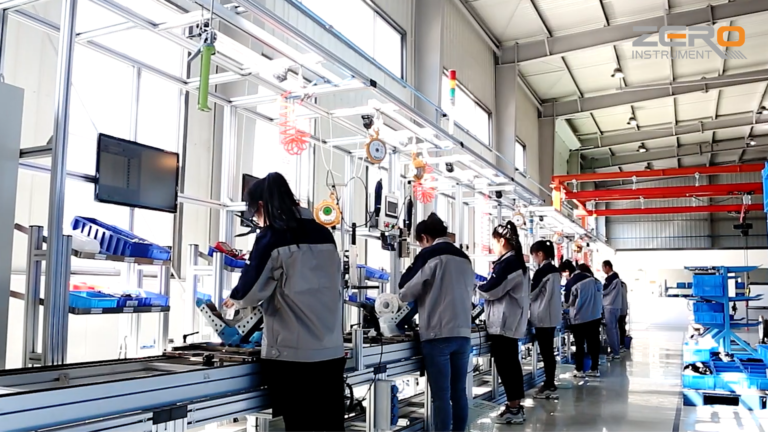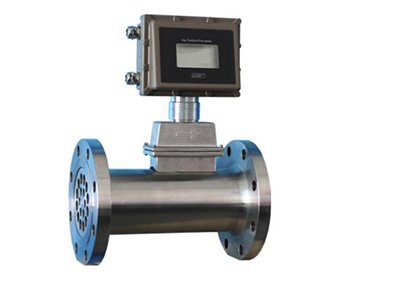Gas turbine flow meters are widely used in the measurement of natural gas, coal gas, liquefied gas, light hydrocarbon gas and other gases. They have excellent low-pressure and high-pressure measurement performance, multiple signal output modes and low sensitivity to fluid disturbance.
When selecting a model, users should reasonably select the model and specifications of the flow meter based on the nominal pressure of the pipeline, the maximum pressure of the medium, the temperature of the medium, the composition of the medium, the flow range and the signal output requirements. The following is a brief introduction on how to select the flow meter.

1. Accuracy level:
Compared with other flow meters that can measure gas media, such as vortex flow meters, the price of gas turbine flow meters is still relatively high. The reason why users choose gas turbine flow meters is mainly because of their high accuracy. However, the higher the accuracy of the flow meter, the more sensitive it will be to changes in on-site usage conditions.
For trade settlement instruments for large-diameter gas pipelines, it is cost-effective to invest more in the instrument, and for occasions where the transmission volume is not large, a medium-level accuracy can be used.

2. Flow range:
Each caliber of flow meter has a specific measurement range, and the selection of the flow meter caliber is also determined by the flow range. For example, the flow range of our company’s DN80 gas turbine flowmeter is 15-300 cubic meters/hour. The principle of selecting the flow range is: the minimum flow rate during use shall not be lower than the minimum flow rate allowed to be measured by the meter, and the maximum flow rate during use shall not be higher than the maximum flow rate allowed to be measured by the meter.
For intermittent working situations where the actual running time of the instrument does not exceed 8 hours per day, select 1.3 times the maximum flow rate during actual use as the upper limit of the flow range; for continuous working situations where the actual running time of the instrument does not exceed 8 hours per day, select the actual When using, 1.4 times the maximum flow rate is used as the upper limit of the flow range.
The lower limit flow rate of the instrument is appropriately 0.8 times the actual minimum flow rate. Simply put, in order to optimize the performance of the flow meter, the flow range of the flow meter should be within the Qmax range of (20%~80%).
3. Pressure loss:
Try to use a turbine flowmeter with a small pressure loss. Because the smaller the pressure loss of the fluid passing through the turbine flowmeter, the less energy is consumed by the fluid from the input to the output pipe, that is, the total power required will be reduced, which can greatly save energy, reduce transportation costs, and improve utilization.
Someone once conducted a test and found that the main component that affects the pressure loss is the front diffuser of the turbine flowmeter. Compared with the selection of a semi-ellipsoid front diffuser and the selection of a conical front diffuser, the pressure loss of the former turbine flowmeter is can be significantly reduced.

4. Structural type:
(1) Based on the internal structure of the turbine flowmeter, we recommend the use of a reverse thrust turbine flowmeter. Because the reverse thrust structure can keep the impeller of the flow meter in a floating state within a certain flow range, there are no contact points in the axial direction, and there is no end friction and wear, which can extend the service life of the bearing.
(2) According to the selection of pipe connection method, the flow meter has two ways of installation: horizontal and vertical installation. The horizontal installation and pipe connection methods include flange connection, thread connection and clamp connection.
Flange connections are used for medium diameter pipes, threaded connections are used for small diameter and high pressure pipes, clamp connections are only suitable for low pressure, medium and small diameter pipes, and general thread and clamp connections are used for vertical installation.
(3) Consider the influence of environmental recommendations such as temperature and humidity. Note that when measuring flammable and explosive media such as natural gas, an intrinsically safe explosion-proof turbine flowmeter must be selected.
5. Bearing material:
The bearings of turbine flow meters generally have three types of materials: tungsten carbide, polytetrafluoroethylene, and carbon graphite. Natural gas meter bearings should be made of tungsten carbide material.

6. Density of the gas to be measured:
For gas turbine flowmeters, the main impact of fluid physical properties is gas density, which has a greater impact on the instrument coefficient, mainly in the low flow area. If the gas density changes frequently, corrective measures should be taken to the flow coefficient of the flow meter.
Of course, by choosing a turbine flowmeter with temperature and pressure compensation, you can simultaneously detect the temperature, pressure and flow rate of the gas being measured, automatically track and compensate the flow rate, and display the gas under standard conditions (Pb=101.325KPa, Tb=293.15K). Volume accumulation, and real-time query of the medium’s temperature and pressure values.
